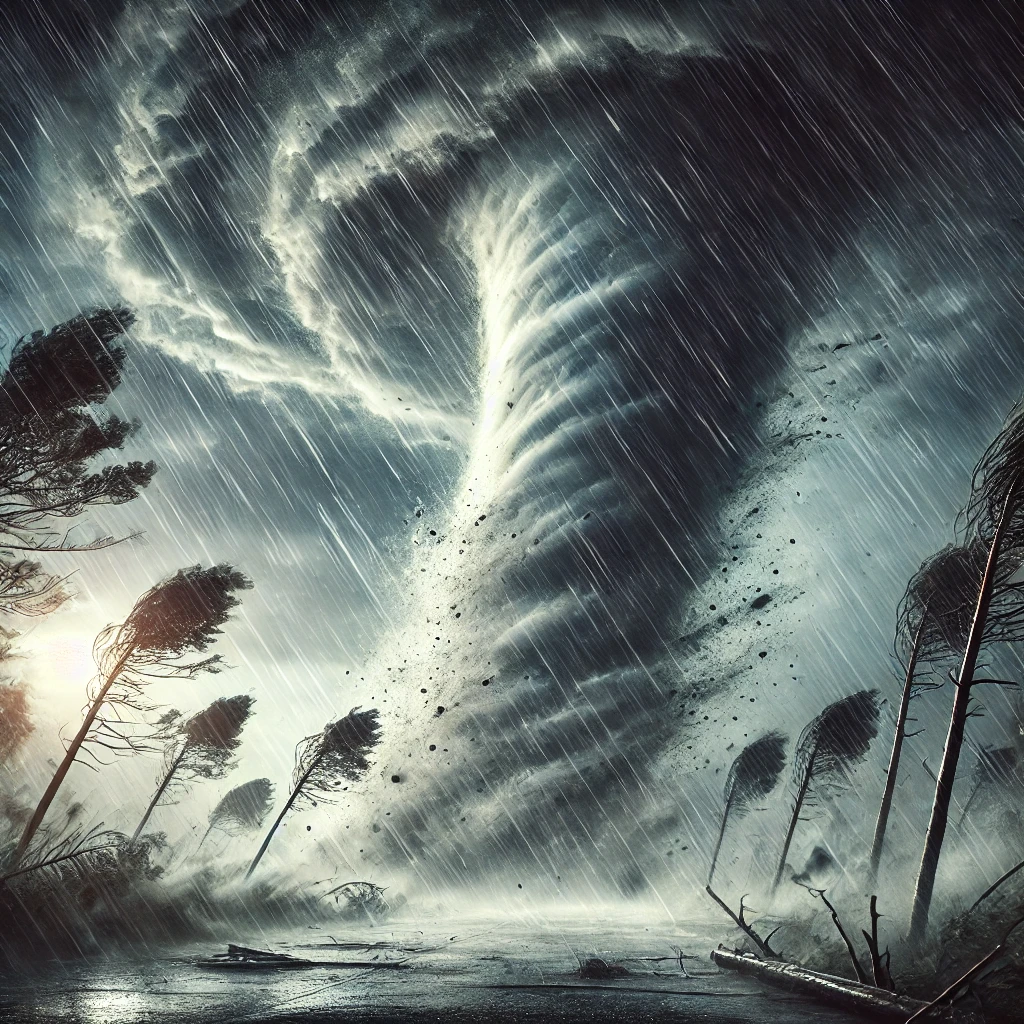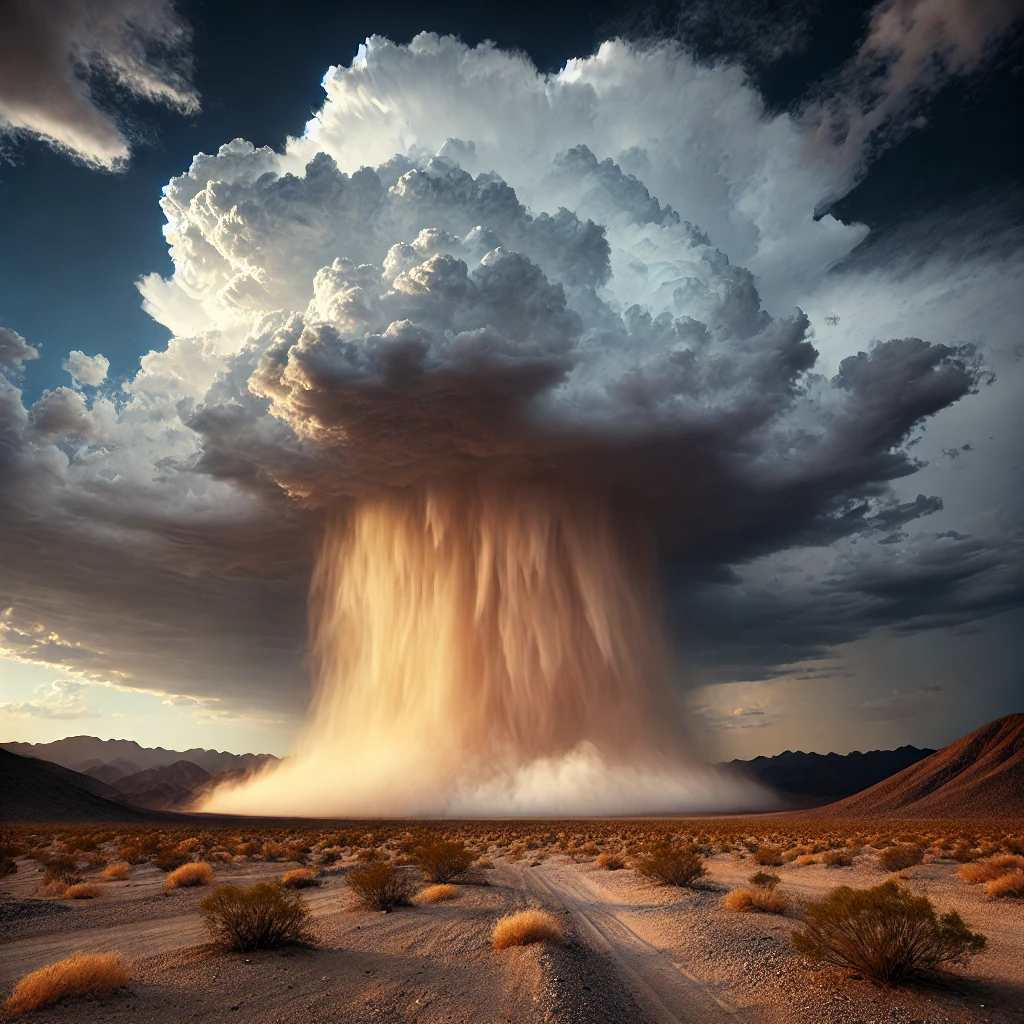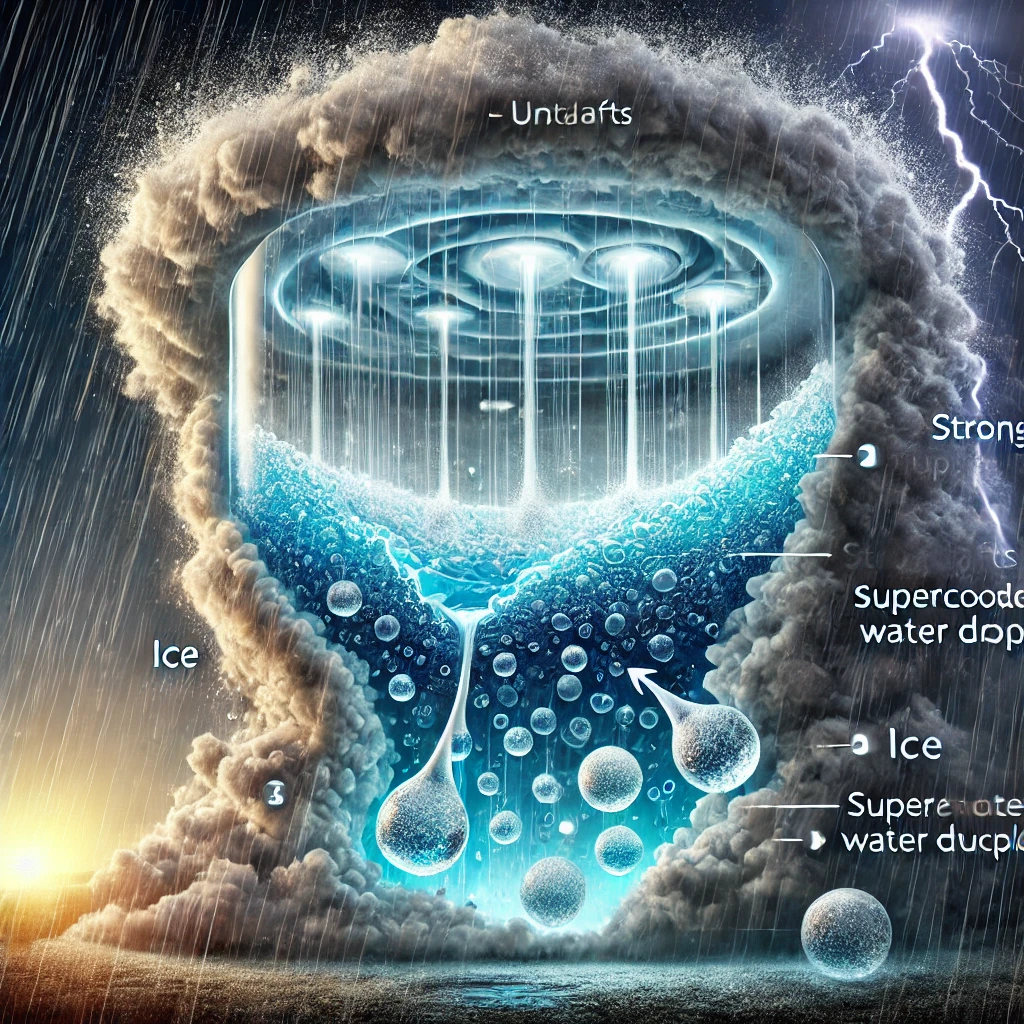What Are Microbursts? The Small Yet Powerful Weather Phenomenon
Introduction:
Microbursts are a relatively rare yet highly destructive weather phenomenon. Despite their small size, they can cause significant damage over a localized area in a very short time. Often misunderstood, microbursts are intense downdrafts that result in powerful winds spreading outwards at the Earth’s surface. These bursts of wind can mimic tornado-like damage but occur in a vastly different manner. This article delves into what microbursts are, how they form, their types, and the dangers they pose.
Definition and Characteristics
A microburst is a localized column of sinking air, known as a downdraft, within a thunderstorm. When this downdraft hits the ground, the air spreads outward in all directions, causing damaging straight-line winds. Microbursts typically cover a small area, usually less than 2.5 miles (4 kilometers) in diameter, but the winds can reach speeds of up to 100 mph (160 km/h) or more.
Despite their small size, microbursts are capable of producing wind speeds comparable to an EF-1 tornado (86 to 110 mph). The major difference lies in the wind patterns: while tornadoes involve rotating winds, microbursts generate straight-line winds.
How Do Microbursts Form?
Microbursts form as a result of a downdraft within a thunderstorm. Several atmospheric processes contribute to the formation of these intense bursts of air:
- Cooling of the Air: As precipitation falls through the air in a thunderstorm, it evaporates, leading to cooling. This cooler air becomes denser and heavier than the surrounding air and begins to sink rapidly toward the ground.
- Rain Loading: In addition to cooling, rain droplets accumulate and become heavy. As this “loaded” column of air descends, it accelerates under gravity.
- Dry Air Entrapment: In some cases, dry air mixes with the downdraft, further enhancing evaporation and cooling. This rapid cooling accelerates the downdraft even more, leading to a stronger burst upon hitting the ground.
When the downdraft strikes the Earth’s surface, the air spreads outwards in all directions. The result is a localized area of high wind speeds radiating from the center of the impact point, often creating damage patterns that are outward rather than the inward twisting seen with tornadoes.

You May Also Like: What Causes Snowstorms and Blizzards?
Types of Microbursts
Microbursts can be classified into two main types based on their moisture content and characteristics:
- Wet Microbursts: These occur when the downdraft is accompanied by significant rainfall. Wet microbursts are more common in humid climates and can be associated with heavy downpours. The falling rain cools the air rapidly, causing the downdraft to intensify. These bursts of wind are often accompanied by a strong rainfall event, and visibility can be dramatically reduced in the affected area.
- Dry Microbursts: Dry microbursts typically occur in dry, arid regions where there is little or no rainfall at the surface. Instead, the downdraft is driven by evaporative cooling of the rain as it falls into dry air below the storm. Dry microbursts can be particularly dangerous because they often lack visible rain, making them harder to detect. Dust and debris may be lifted from the ground by the winds, further contributing to the hazard.
Dangers and Impacts
The intensity of a microburst can cause serious destruction to infrastructure, especially if it strikes areas unprepared for such violent winds. Some of the main dangers and impacts associated with microbursts include:
- Damage to Property: Microbursts can flatten trees, damage buildings, and tear roofs off structures in a matter of seconds. The concentrated nature of the winds means that the damage is often localized but severe.
- Aviation Hazards: Microbursts are especially dangerous for aviation. As the intense downdraft hits the ground and spreads outwards, it can cause wind shear, a rapid change in wind direction and speed. Aircraft taking off or landing can suddenly encounter these changing wind conditions, leading to a loss of control. Some of the most catastrophic aviation accidents in history have been attributed to undetected microbursts.
- Transportation Disruptions: High winds can cause accidents on roads, especially with large vehicles like trucks that are susceptible to tipping. Power lines and other infrastructure can also be severely damaged, leading to outages and road blockages.
- Agricultural Damage: Crops and orchards can be damaged by the intense winds. Fields of crops can be flattened, and fruit trees can be severely damaged or uprooted by the violent bursts of wind.
Detection and Forecasting
Because microbursts are small-scale events, detecting them in advance can be challenging. However, meteorologists use several tools to monitor atmospheric conditions and predict the likelihood of microbursts:
- Doppler Radar: Modern radar systems are crucial for detecting microbursts. Doppler radar can identify wind patterns within a storm and detect the rapid changes in velocity associated with the onset of a microburst.
- Weather Satellites: Satellites help track large storm systems and monitor atmospheric moisture, temperature, and pressure gradients. This information can provide clues about the potential for microburst development.
- Wind Shear Alert Systems: Airports and other high-risk areas often have systems that monitor wind shear, a key indicator of microbursts. These systems use radar and sensors to track changes in wind speed and direction.
Famous Microburst Events
Several notable microburst events have caused significant destruction, demonstrating the dangerous potential of this phenomenon.
- Delta Air Lines Flight 191 (1985): One of the most well-known microburst-related disasters occurred at Dallas/Fort Worth International Airport in 1985. A microburst-induced wind shear caused the aircraft to crash during its approach, killing 137 people. This tragedy spurred major advancements in wind shear detection technology at airports.
- The Downburst Event in Concord, New Hampshire (1999): A powerful microburst struck the town of Concord, New Hampshire, flattening trees, damaging homes, and knocking out power to thousands of people. The suddenness and intensity of the event caught many by surprise, and it remains one of the most destructive microbursts in the region.
Conclusion
Microbursts are small but incredibly powerful weather events that can cause significant damage over a short period. Understanding how they form and the dangers they pose is essential, particularly for communities in storm-prone areas and aviation sectors. Although forecasting microbursts is challenging, advancements in meteorological technology continue to improve our ability to detect and mitigate their impacts. While they may not have the same name recognition as tornadoes or hurricanes, microbursts are a force to be reckoned with, deserving of respect and attention.
Also Visit: What Is Risk Management? A Comprehensive Guide -2024




1 comment